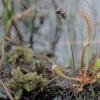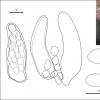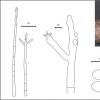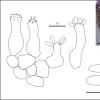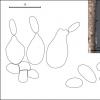
09-01-2026 17:41
Arnold BüschlenHallo, F. dilatata wird von vielen Bryoparasiten

10-01-2026 20:00
Tom SchrierHi all,We found picnidia on Protoparmeliopsis mur

07-01-2026 22:22
 Danny Newman
Danny Newman
Tatraea sp. on indet. hardwood The Swag, Great Sm

10-01-2026 01:18
 Danny Newman
Danny Newman
cf. Neovaginatispora fuckelii on indet. shrub Pre

07-01-2026 10:24
 Danny Newman
Danny Newman
Pezicula sp. on indet. hardwood Appalachian Highl

09-01-2026 10:08
 Blasco Rafael
Blasco Rafael
Hola, en el mismo habitat que la anteriorRetamaDia

08-01-2026 21:22
 Blasco Rafael
Blasco Rafael
Hola, He recogido esta muestra de Orbilia sobre Re

07-01-2026 17:29
 Marc Detollenaere
Marc Detollenaere
Dear Forum,On a barkless Populus I found some smal

10-11-2021 17:33
 Riet van Oosten
Riet van Oosten
Add-on topic http://www.ascofrance.com/forum/7059

07-01-2026 10:05
 Danny Newman
Danny Newman
cf. Chaetospermum on XylariaCosby Campground, Grea
A carnivorous plant, sundew (Drosera anglica, D. rotundifolia) may have some special biochemical composition and accordingly adapted to it fungal community. I collected four morpho-species from this plant so far. Though its leaves are thick and there are many of them in the litter, they were. All collected species were growing at flowering shoots and at fruits. Probably, digestive enzymes in leaf drops ("due") could be repellent to fungi.
One common enough here species is a Mycosphaerella. The perithecia are very tiny, up to 100 mk and barely visible. But there are mature asci and two-celled hyaline spores inside, in reward for the tedious work with such a small objects. (#4204 - https://www.cubby.com/pl/%234204/_6eca9336e9e841359e9ced422c8bcf11)
Some relative of Bortytis was spotted after the short incubation in a wet chamber.(#4201 - https://www.cubby.com/pl/%234201/_ca45a85a098d43a5b7e6de51328c4cac)
Another anamorphic species with surprising look was revealed at the scale of a fruit. Clavate conidiogenous cells bear at its tips several ellipsoid conidia. (#4205 - https://www.cubby.com/pl/%234205/_a06c63f7ce7d4c46b533d8d9769c6919)
The last morpho-species is again anamorphic. Small perithecioid structures were spotted in upper part of a stem. They filled with drop-shaped conidiogenous cells, from upper narrowed part of those arise ellipsoid conidia. And look at the photo: obviously, this dinosaur threatens to our fungus ). (#4207 - https://www.cubby.com/pl/%234207/_fd8ac1df758742e2baa9e219b70a88ee)?
